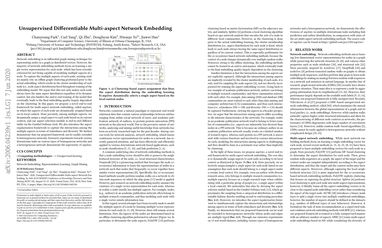Unsupervised Differentiable Multi-aspect Network Embedding
Network embedding is an influential graph mining technique for representing nodes in a graph as distributed vectors. However, the majority of network embedding methods focus on learning a single vector representation for each node, which has been recently criticized for not being capable of modeling multiple aspects of a node. To capture the multiple aspects of each node, existing studies mainly rely on offline graph clustering performed prior to the actual embedding, which results in the cluster membership of each node (i.e., node aspect distribution) fixed throughout training of the embedding model. We argue that this not only makes each node always have the same aspect distribution regardless of its dynamic context, but also hinders the end-to-end training of the model that eventually leads to the final embedding quality largely dependent on the clustering. In this paper, we propose a novel end-to-end framework for multi-aspect network embedding, called asp2vec, in which the aspects of each node are dynamically assigned based on its local context. More precisely, among multiple aspects, we dynamically assign a single aspect to each node based on its current context, and our aspect selection module is end-to-end differentiable via the Gumbel-Softmax trick. We also introduce the aspect regularization framework to capture the interactions among the multiple aspects in terms of relatedness and diversity. We further demonstrate that our proposed framework can be readily extended to heterogeneous networks. Extensive experiments towards various downstream tasks on various types of homogeneous networks and a heterogeneous network demonstrate the superiority of asp2vec.
PDF Abstract


